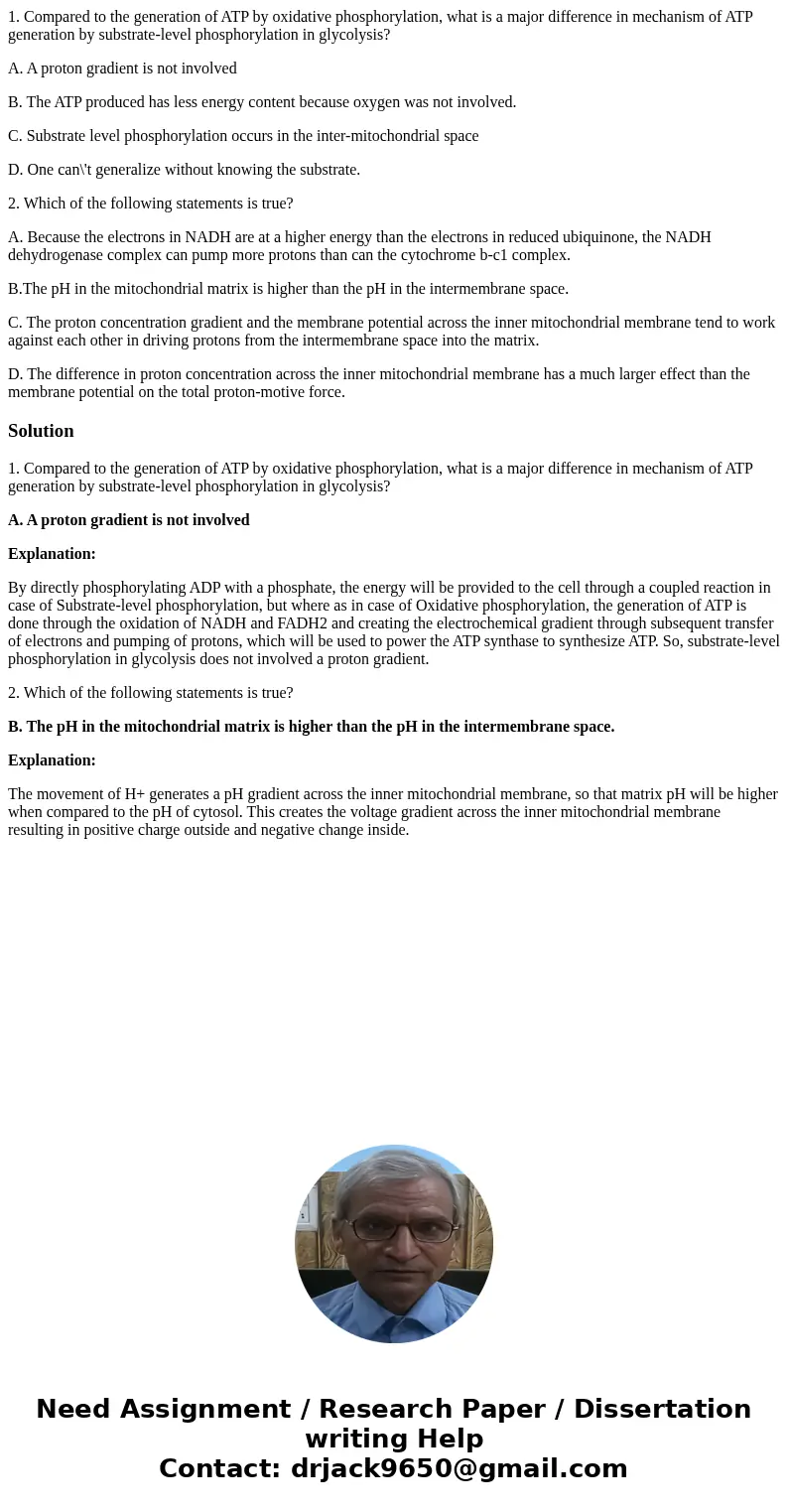1 Compared to the generation of ATP by oxidative phosphoryla
1. Compared to the generation of ATP by oxidative phosphorylation, what is a major difference in mechanism of ATP generation by substrate-level phosphorylation in glycolysis?
A. A proton gradient is not involved
B. The ATP produced has less energy content because oxygen was not involved.
C. Substrate level phosphorylation occurs in the inter-mitochondrial space
D. One can\'t generalize without knowing the substrate.
2. Which of the following statements is true?
A. Because the electrons in NADH are at a higher energy than the electrons in reduced ubiquinone, the NADH dehydrogenase complex can pump more protons than can the cytochrome b-c1 complex.
B.The pH in the mitochondrial matrix is higher than the pH in the intermembrane space.
C. The proton concentration gradient and the membrane potential across the inner mitochondrial membrane tend to work against each other in driving protons from the intermembrane space into the matrix.
D. The difference in proton concentration across the inner mitochondrial membrane has a much larger effect than the membrane potential on the total proton-motive force.
Solution
1. Compared to the generation of ATP by oxidative phosphorylation, what is a major difference in mechanism of ATP generation by substrate-level phosphorylation in glycolysis?
A. A proton gradient is not involved
Explanation:
By directly phosphorylating ADP with a phosphate, the energy will be provided to the cell through a coupled reaction in case of Substrate-level phosphorylation, but where as in case of Oxidative phosphorylation, the generation of ATP is done through the oxidation of NADH and FADH2 and creating the electrochemical gradient through subsequent transfer of electrons and pumping of protons, which will be used to power the ATP synthase to synthesize ATP. So, substrate-level phosphorylation in glycolysis does not involved a proton gradient.
2. Which of the following statements is true?
B. The pH in the mitochondrial matrix is higher than the pH in the intermembrane space.
Explanation:
The movement of H+ generates a pH gradient across the inner mitochondrial membrane, so that matrix pH will be higher when compared to the pH of cytosol. This creates the voltage gradient across the inner mitochondrial membrane resulting in positive charge outside and negative change inside.

 Homework Sourse
Homework Sourse